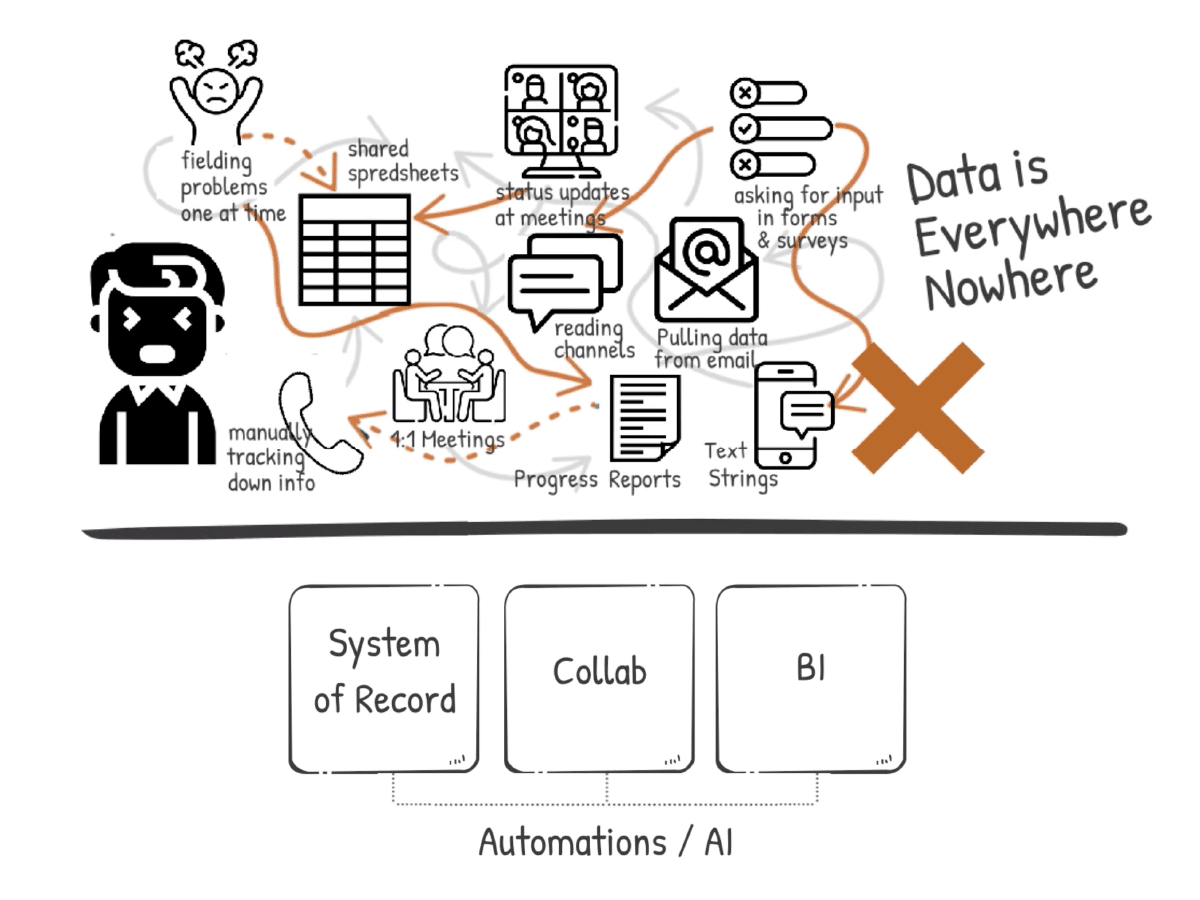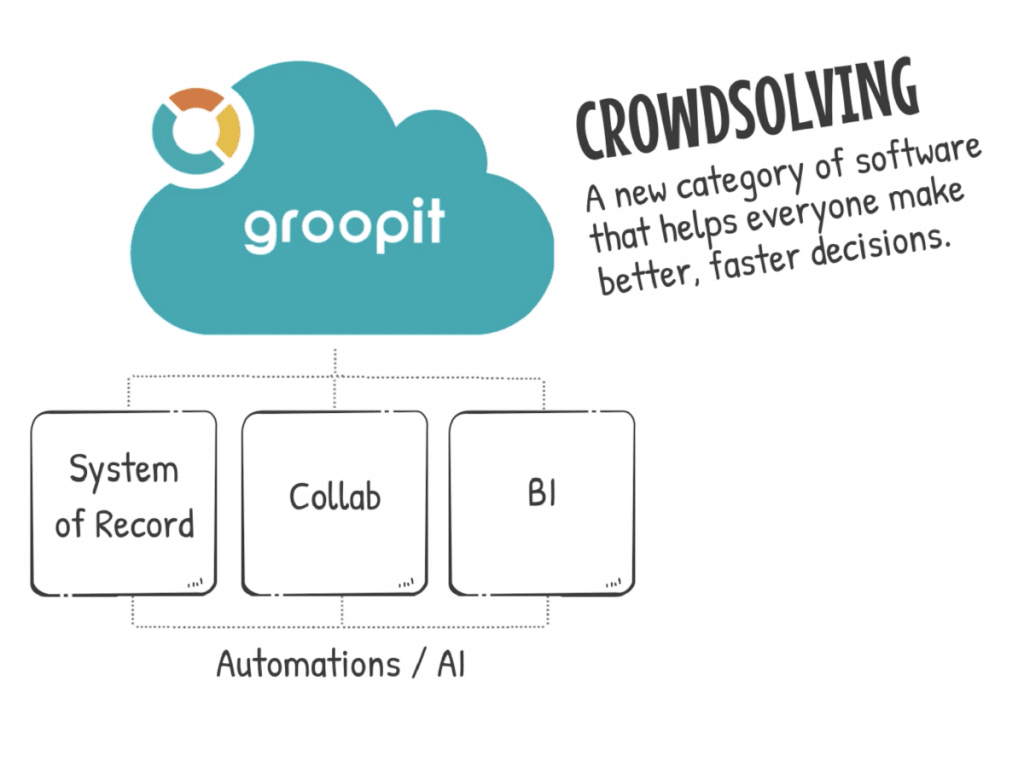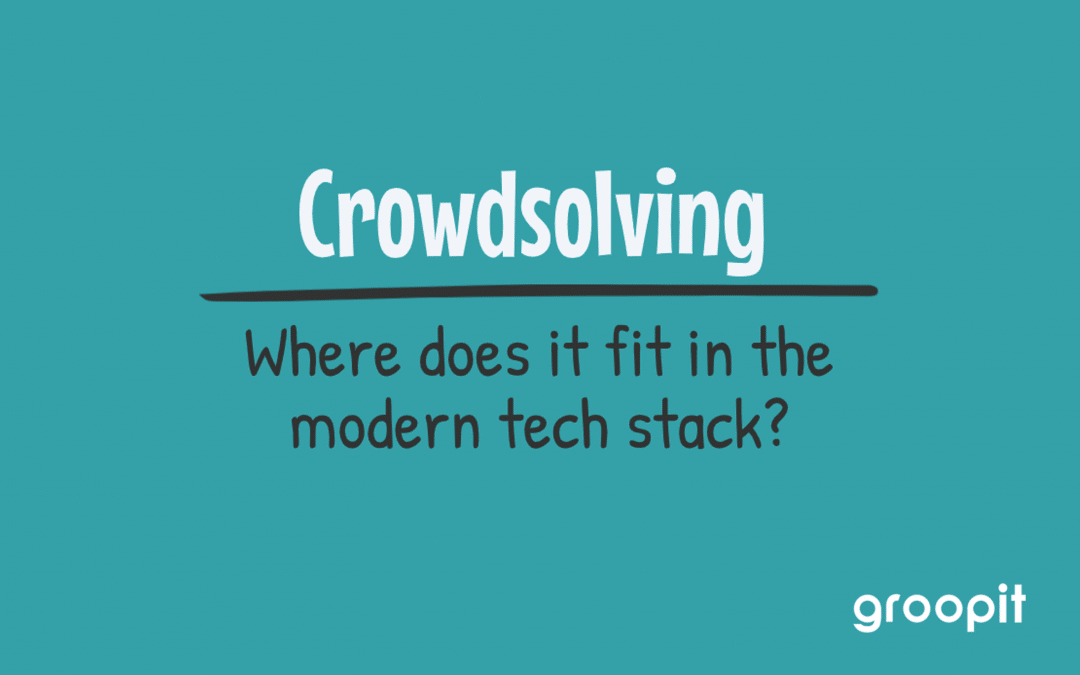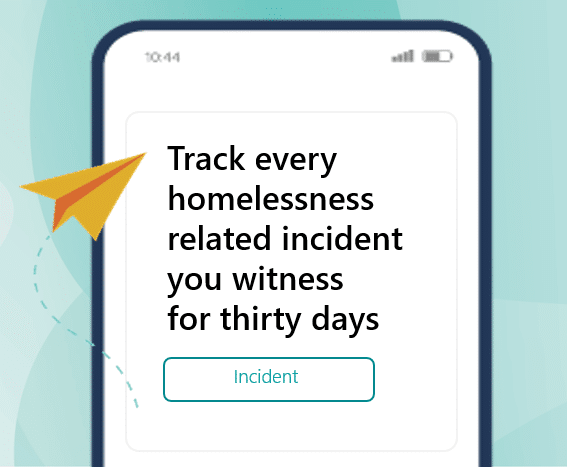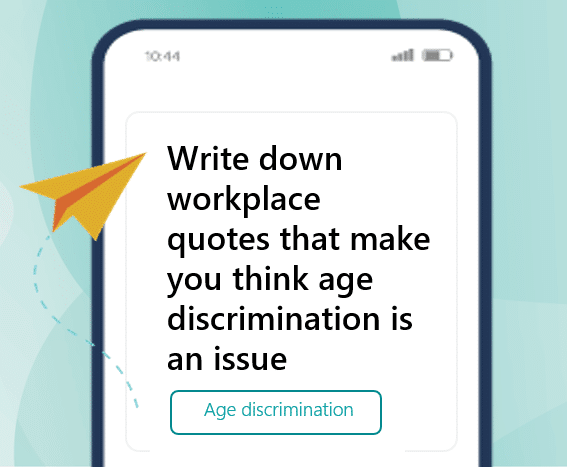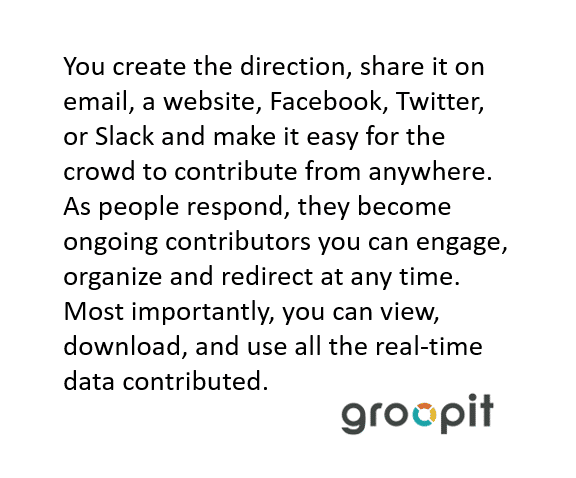The modern tech stack includes a system of record like Salesforce for sales, collaboration software like Slack or Teams, business intelligence software like Tableau or Mode, and some AI like Gong or Troops for sales automation.
But where does crowdsolving fit in? Even when a robust infrastructure exists, leaders are constantly gathering information from meetings, texts, emails, surveys, shared spreadsheets. We use four, five, or six of these at any one time.
The result: ad-hoc data chaos. The data is everywhere, nowhere, and much of that data never makes it into the system of record.
The question is: why?
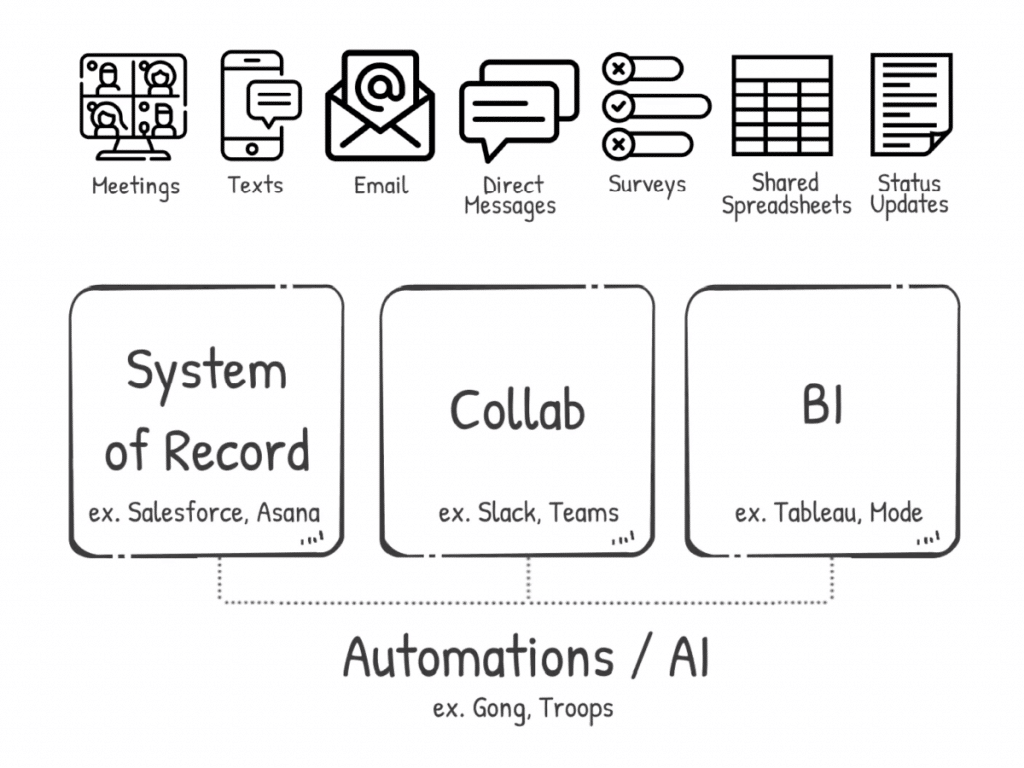
The problem exists because it’s not solved in the existing systems. Systems of record are designed to gather data consistently over a long period of time, not to be flexible and agile. Slack and Teams are designed to be massively flexible so teams can discuss anything, but not to yield structured, quantitative data. Business intelligence software provides real-time visibility, but not into what people are thinking and observing. So getting the data, flexibility and visibility we need to make decisions results in ad hoc data chaos.
Groopit replaces the chaos with crowdsolving. It’s an entirely new category of software that helps everyone make better, faster decisions. Watch this short video to learn where crowdsolving fits in the modern tech stack. Then let’s connect to see how Groopit can work for you.
